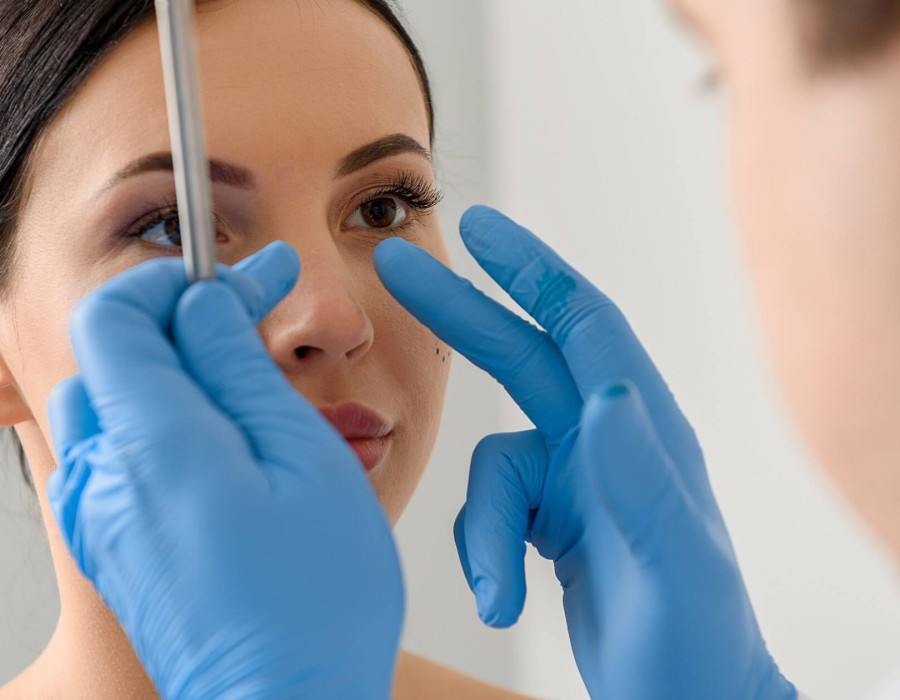Swelling is a natural part of the healing process after rhinoplasty. It occurs as the body responds to the trauma caused during surgery. Typically, the most significant swelling appears within the first week post-operation, particularly around the nose and under the eyes. While a substantial amount subsides within the first month, subtle residual swelling—especially at the tip of the nose—can linger for several months. Understanding that this process takes time is essential for managing expectations and following a recovery plan.
Prioritize Cold Compresses in the Early Stages:
Cold compresses are one of the most effective ways to minimize swelling during the initial 48 to 72 hours after surgery of Rhinoplasty in Dubai (تجميل الأنف في دبي). Applying a cold pack to the cheeks—not directly on the nose—helps constrict blood vessels and reduce inflammation. Use the compress for 15-20 minutes at a time with breaks in between to prevent skin damage. This technique can significantly decrease the severity of early swelling and provide relief from discomfort during the most sensitive stage of recovery.
Keep Your Head Elevated at All Times:
Maintaining an elevated head position—especially while sleeping—is critical for managing swelling. Gravity assists in draining excess fluids away from the surgical site. Use two or more pillows to prop up your head or sleep in a reclining chair if needed during the first couple of weeks. Avoid bending over, heavy lifting, or lying flat, as these positions can increase blood flow to the face and exacerbate swelling. Consistently keeping your head elevated can speed up recovery and improve long-term outcomes.
Stay Hydrated and Maintain a Low-Sodium Diet:
Proper hydration supports your body’s natural healing processes. Drinking plenty of water helps flush out excess fluids and reduce puffiness. In contrast, consuming high amounts of salt can cause the body to retain water, intensifying swelling and prolonging recovery. Aim for a balanced diet rich in fruits, vegetables, and lean proteins. Anti-inflammatory foods like pineapple (which contains bromelain) may also contribute to faster healing. Avoid processed and salty foods, especially in the first few weeks after surgery.
Avoid Strenuous Activities and Protect Your Nose:
Physical exertion can lead to increased blood flow and heightened swelling. It’s important to avoid exercise, bending, or heavy lifting for at least 2 to 3 weeks after rhinoplasty. These activities can strain your healing tissues and delay recovery. Additionally, take precautions to protect your nose from accidental bumps or trauma. Even minor impacts can worsen swelling or affect the surgical outcome. If you wear glasses, use special taping techniques or splints to prevent pressure on the bridge of the nose.
Follow Post-Operative Instructions Carefully:
Your surgeon will likely provide detailed aftercare instructions tailored to your specific case. These may include how to clean the surgical area, medications to take, and what signs of complications to watch for. Adhering strictly to these guidelines helps minimize the risk of infections or other issues that can worsen swelling. It's also important to attend all scheduled follow-up appointments. These visits allow for professional monitoring of your healing progress and timely interventions if needed.
Be Patient and Give Your Body Time to Heal:
Swelling can be emotionally challenging, especially when waiting to see the final result of your rhinoplasty. However, patience is essential. The majority of the swelling typically resolves within the first 3 months, but complete resolution—especially at the nasal tip—can take up to a year. Tracking your progress through photos can help you notice gradual improvements over time. Embrace the healing journey, and trust that with proper care, your results will emerge beautifully as the swelling subsides.
Conclusion:
Reducing swelling after Rhinoplasty in Dubai (تجميل الأنف) is a crucial part of the healing process and directly impacts the final aesthetic outcome. By following simple yet effective strategies—such as using cold compresses, maintaining proper head elevation, staying hydrated, avoiding strenuous activity, and following aftercare instructions—you can support your body’s recovery and minimize discomfort. While swelling is inevitable, it is also temporary. With patience, consistency, and care, you’ll gradually see the refined results of your surgery unfold, revealing a natural and balanced enhancement to your facial appearance.





Comments